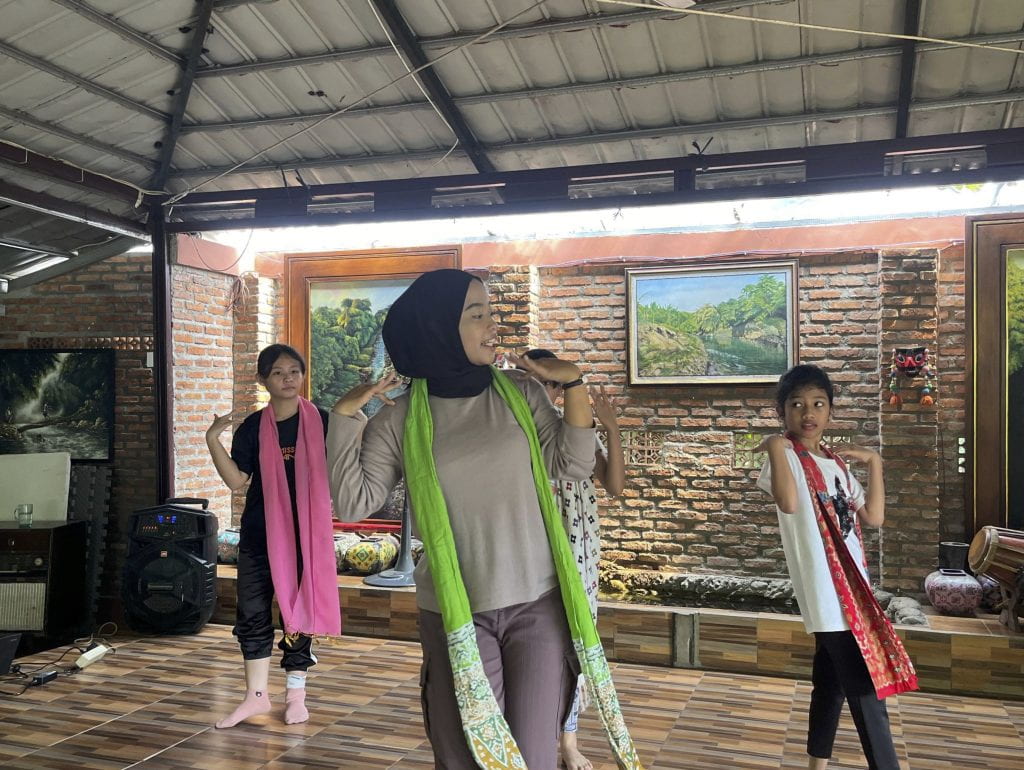Latest posts
- Policy documents: UNICEF Innocenti Discussion Paper on Children and Youth Participation (August 2025) 26 August 2025
- MAP International Online Conference 2025: Session Summaries Report 24 July 2025
- MAP 2025 Conference Highlights: Recordings and Slides 23 July 2025
- Journal article: Reimagining Peace Education in Nepal: Arts-Based, Learner-Centric Pedagogy for Social Justice and Equity 13 July 2025
- Curricula: Mithila art-focused local curriculum in Nepal 2 July 2025
- MAP International Online Conference 2025 1 June 2025
- Policy brief: Gira Ingoma book and policy brief: “The Culture We Want, for the Woman We Want” 28 November 2024
- Manuals and toolkits: GENPEACE Children’s Participation Module in the Development Process 13 November 2024
- Journal article: [Working Paper] Gira Ingoma – One Drum per Girl: The culture we want for the woman we want 30 October 2024
- Curricula: Beyond Tradition: Psychosocial Model 30 October 2024
- Curricula: Beyond Tradition Module: Revitalizing Lenong as a Model for Teaching Betawi Arts 30 October 2024
- Curricula: Beyond Tradition: Lenong Revitalisation as a Model for Teaching Betawi Cultural Arts 30 October 2024
Beyond Tradition: Young People’s Learning Processes in Preparing for the Lenong Performance
- Advocating for progressive education
14th December 2023
Authors: Theresia Gultom and Natasha Sheir Abraham*
The preparations for the Lenong performance in the Beyond Tradition project continue to be loaded with new things. Throughout the rehearsals in preparation for this performance, the Lenong group, the Gambang Kromong (traditional orchestra of the Betawi people), the dance group, and also the documentation team have been involved in the collaborative process. The MAP young people have shown enthusiasm and commitment, from choosing the groups, writing the Lenong scripts, composing the songs to distributing the roles. All this is based on the interests, aspirations, and potential talents of the young people.

From 12 to 19 November, the MAP young people have started to focus on the training of each performance group, namely Lenong, dance, and Gambang Kromong. The Gambang Kromong group begins each rehearsal by placing each musical instrument in a position according to the general rules of Gambang Kromong orchestra. This is done by all members of the group working together under the guidance of Bang Dede (“bang” refers to the term used for an older male) as the coach. The young people then began to practise the traditional Betawi songs that would be performed during the performance, namely ‘Kicir-kicir’, ‘Sirih Kuning’ and ‘Ondel-ondel’. At the same time, the dance group also practised, starting with the song “Sirih Kuning”. For the young people to progress equally, the trainer, Kak Femia (“kak” refers to an older person), divided them into small groups and led them in turn through the movement exercises. Equally interesting and exciting was the Lenong group who practised with great enthusiasm. The young people started by finalising their scripts and roles, which they then tried to practise immediately. The training was led by Mr Jose Rizal Manua, who is also a drama and theatre performance artist. He guides the young people to have a sense of control over their performances. Apart from the dance, Lenong, and Gambang Kromong groups, each group was also accompanied by members of the documentation team, who recorded every moment of the training as an interesting and inspiring journey for other young people.
Key learnings from each team

Each of the performance and documentation teams has a unique and inspiring process, not only for the young people but also for the research team. First, the Lenong group shows how young people can act according to their role, but can also go beyond it. For example, because Lenong only requires a storyline (and not a script), the Lenong players have a lot of room to improvise. Through Lenong, MAP youth have space to improvise, but still learn to pay attention to the proportions and accuracy of their improvisational moments according to their role and the storyline. Secondly, the dance group shows how young people learn about dance movements, so that they are in harmony with the components of Lenong and Gambang Kromong, because they form a unit that goes together. Through dancing, MAP youth become more aware of their position when performing (for example, it is best not to turn your back on other performers). Thirdly, the Gambang Kromong group showed the MAP young people who were invited to appreciate the musical instruments that are played (cared for and maintained) and also to learn the placement of each musical instrument in the Gambang Kromong because it has its own meaning. Fourthly, the documentation team learned to be more sensitive to small things or small interactions that happen around them that will influence the growth of the players. The MAP documentation team often documents as many moments as possible that occur during Lenong performance practices.
The preparation of the Beyond Tradition Lenong performance is an opportunity for young people to learn the value of collective work. While each team has its own specific focus, they are all working as part of a larger team towards a common goal: to ‘perform’ youth issues while revitalising tradition.
*Authors’ profile:
Theresia Gultom
is a student from the Faculty of Psychology at UNIKA Atma Jaya who is currently carrying out an internship at CFRD (Center for Family Resilience and Development) and is involved as part of the psychosocial team for the Beyong Tradition project in MAP.
Natasha Sheir Abraham
is the Project Administrative Manager at the Center for Family Resilience and Development under the Faculty of Psychology, Unika Atma Jaya, who in this MAP project is tasked with assisting and supporting the Psychosocial Support team.

Beyond Tradition
Revitalising the art of Lenong (a form of Betawi traditional theatre) as a dialogic tool for peacebuilding.



